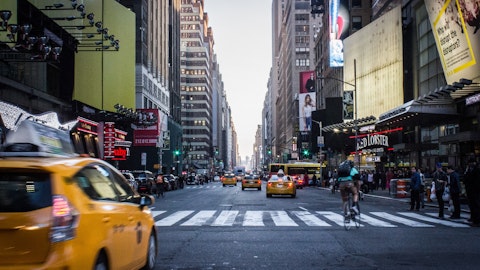In this article, we will take a look at the 20 saddest cities in the world.
Depression is one of the most common mental illnesses that affects about 5% of the world’s adult population. Long-lasting sadness, a loss of interest in previously enjoyable activities, trouble sleeping, and difficulty concentrating are its hallmarks. It is a major cause of disability and adds a lot to the worldwide burden of illness. The causes of this condition include both social and bodily factors as well as psychological and social ones. Notably, life events like having a hard youth, losing a loved one, and being out of work have been found to play a big role in its start and spread. Even though there are psychological and drug treatments available, a lot of people in low- and middle-income countries don’t have easy access to care or support services. More than three-quarters of people with mental problems in these areas do not get the help they need, which is very worrisome.
Depression is a common problem around the world that affects more than 300 million people. Many of these people are poor, have poor health, or have been mistreated in some way. You can’t say enough about how important mental health is to achieving global development goals since sadness and suicide are major causes of both disability and early death. Even though there have been improvements, mental health problems often lead to violations of human rights, discrimination, and the spread of social stigma. The current amount of treatment coverage isn’t enough, so more money needs to be spent on raising awareness, making it easier to get high-quality care, and moving research forward.
When this social stigma is present, people are often less likely to be able to use their civic rights, take part in social events, get an education, or get medical care. Depression is a big problem in poor countries because most of them don’t have enough mental health services and don’t have enough money to pay for them. About 5% of the government’s health budget is often used to pay for mental health programs in industrialized countries. In poor countries, on the other hand, less than 1% of the spending goes to mental health.
Depression is linked to many things in developing countries, including but not limited to violence, torture, epidemics, death, poverty, food instability, the loss of children, and being homeless. Research has shown that there is a link between being tortured and getting depressed. Also, it’s important to know that there aren’t enough mental health doctors in developing countries. Moreover, different countries have different rates of depression and different links to depression. These differences are thought to be caused by factors like the amount of national income or differences in income. At the level of the person, several things were found to be linked to a higher chance of having depression. You can read the different types of depression in our article titled, 20 Most Depressed Cities in the World.
Depression is a problem all over the world. Unfavorable conditions in a given place contribute immensely to the decline of the mental health of civilians. Studies of the general population show that the number of people with mental illnesses is definitely going up. Children, the old, and people who can’t work are also at risk. The level of trauma and the provision of physical and emotional support are linked to the prevalence rates. In developing countries, people often use cultural and religious ways to deal with these problems.
In this article, we will look at the 20 saddest cities in the world. We will see that most of the factors that contribute to the general decline of the mental well-being of a populace include, but are not limited to: socio-economic inequality, wars, unfavorable traffic, low temperatures, overpopulation, poor traffic management, etc. Taking this into account, we have lined up the 20 saddest cities in the world.

kurhan/Shutterstock.com
Our Methodology
A comprehensive analysis was carried out utilizing studies, articles, and research derived from eight different sources with the end goal of determining the top 20 saddest cities in the world. The circumstances and conditions on which a specific city thrives, as well as the overall feel of the general public inhabiting a certain city, are taken into account to analyze and rank the prevalence of the condition among the populations of various cities. In addition to this, a city receives an additional point for each instance in which it is featured on the list of a certain source. Next, a hierarchical classification system was constructed based on these parameters and the top 20 saddest cities in the world. You can also take a look at our 30 Countries with the Highest Depression Rates article to learn about the countries that are suffering from depression the most.
20 Most Saddest Cities in the World
20. Yakutsk
Yakutsk, the capital and administrative center of Russia, has gained recognition for its exceptionally cold temperatures, hence earning the distinction of being the coldest city globally. This low temperature significantly contributes to making it one of the saddest cities in the world, as it is not an ideal environment for its inhabitants. The inhabitants of Yakutsk exhibit a tendency to remain indoors for the majority of their time, primarily owing to the exceedingly low temperatures prevalent in the region. Their ventures outside are typically limited to essential errands or activities of personal significance. The urban environment is blanketed in a layer of snow, suggesting a resemblance to the Arctic region. In response, individuals opt to save their possessions, such as automobiles, in temperature-controlled garages situated within their residences. The inhabitants of the city are renowned for their persistent commitment to these severe climatic conditions, even the frigid weather.
19. Aleppo
The control of rebel forces in Aleppo has been one of the most contributing factors to why the place is considered one of the saddest cities in the world. Over the course of five years, Aleppo, which was once a thriving metropolis serving as the economic and cultural center of Syria, has seen a profound transformation, now resembling a war-torn zone marked by extensive damage. The urban area spans approximately 70 square kilometers and exhibits significant fragmentation, with divisions existing among the Syrian regime, rebel factions, Kurdish groups, and ISIS. The conditions of daily life in Aleppo, which is under the control of rebel forces, are characterized by extreme hardship, as residents face significant challenges in obtaining essential resources such as food, fuel, and other basic necessities. The encirclement imposed by the government forces surrounding the region of Aleppo, which is under the control of opposition factions, has resulted in a severe disruption of the provision of essential commodities such as food, fuel, and other daily requirements. According to the International Rescue Committee, the civilian population residing in Aleppo experiences a persistent state of worry as they contemplate the possibility of their residences being targeted during the night, fully aware of their limited power in such circumstances.
18. Aokigahara
Ranking 18th in our list of the saddest cities in the world is Aokigahara. The city is renowned for its Aokigahara Jukai Forest. The Aokigahara Jukai Forest, situated in close proximity to Mount Fuji, is a densely populated forest characterized by its lush vegetation. This forest has garnered significant attention due to its historical association with cases of depression and suicide. Visitors are strongly advised to adhere to designated pathways; yet, there exist individuals who purposefully venture into the forest with the explicit intention of remaining within its confines indefinitely. The Aokigahara Forest, sometimes referred to as the Suicide Forest, holds a prominent reputation as a frequently chosen location for suicides in Japan, a country that exhibits elevated suicide rates relative to other affluent nations. The forest’s renown is derived from its rich folklore and its prominent presence in literary and popular culture. According to traditions, the forest was purportedly a site where the ancient custom of ubasute was previously observed, wherein elderly or infirm family members were abandoned to meet death. The forest has emerged as a venue for photographers to investigate the ramifications of despair within a society that lacks a culture of open dialogue on mental health concerns and harbors a significant stigma surrounding suicide. For what Aokigahara is known for, it makes it one of the most depressing cities in the world.
17. Bakersfield
Bakersfield is arguably one of the saddest cities in America. According to statistics, 1 in 22 people in Bakersfield will become a victim of a crime, demonstrating the city’s notable prevalence of criminal activity. In addition, the dry environment exacerbates the susceptibility to wildfires, floods, and earthquakes. Because of its location in the Central Valley, Bakersfield is more prone to pollution from oil extraction. The urban environment exhibits a high degree of car dependency, hence posing challenges for pedestrian and cyclist mobility, while the public transportation system lacks reliability. Bakersfield frequently encounters arid conditions characterized by high temperatures, minimal humidity, and an absence of snowfall. Despite these drawbacks, Bakersfield offers a suburban lifestyle with convenient amenities, but there are serious health issues that could affect some residents.
16. Cairo
Cairo is considered one of the saddest cities in Cairo, Egypt. It is renowned for its challenging living conditions, characterized by issues such as heavy traffic congestion, limited punctuality, and inadequate parking facilities. The duration of traffic congestion in the urban area might extend for a period of up to 12 days, posing challenges in accessing essential destinations such as cafes or medical appointments. Moreover, Cairo is widely acknowledged as being among the noisiest urban centers globally, owing to its small avenues flanked by towering buildings that generate tunnels saturated with sound that contribute to citizens’ stress when living in the area. Unfavorable living conditions and stress contribute to making Cairo one of the saddest cities in the world.
15. Chisinau
Chisinau, the capital city of Moldova, is frequently regarded as the nation with the poorest population in Europe and is frequently referenced as one of the saddest cities globally. Chisinau, alternatively referred to as Kishinev, serves as the political and administrative center of Moldova. The initial observations of a traveler about Chisinau are somewhat unfavorable, where they characterize the place by the presence of deteriorating Soviet-Realist architectural structures, a dense and dusty atmosphere, and a desolate environment. Additionally, one may observe extensive destruction inflicted upon numerous structures within the city as a result of the Second World War, resulting in a prevailing sense of desolation throughout the urban landscape. Moreover, Chisinau presents an absence of educational and career prospects for girls, particularly those who have fallen victim to sex trafficking. Chisinau is also known for its socioeconomic difficulties, which include high levels of poverty, unemployment, and pervasive alcohol dependence, making it the second-most alcohol-dependent country in the world. Despite its risks, Chisinau, Moldova, presents itself as an exceptional place for travelers seeking an unconventional and less frequented encounter.
14. Damascus
Damascus, widely regarded as one of the cities least liveable globally, is currently confronted with severe living circumstances. It is also one of the reasons why Damascus is one of the saddest cities in the world. The financial and social situation in Syria is anticipated to deteriorate further inside regions under the authority of the Syrian regime. Since January 2022, there has been a significant rise of 75% in prices, resulting in a substantial decline in the purchasing power of the general public. The ability to meet basic requirements has become an unattainable aspiration for Syrian households, particularly in urban areas under regime rule where access to electricity and water is severely limited. The presence of individuals of various ages and genders engaging in begging has become a prevalent phenomenon within the regions under the jurisdiction of the governing authority. The current proliferation can be attributed to several underlying factors, such as the decrease in monthly income, limited job prospects, and the devaluation of the Syrian pound.
13. Hong Kong
Hong Kong ranks 13th in our list of the saddest cities in the world. According to a wellbeing survey, Hong Kong’s ranking falls below the global average, hence exerting an impact on various dimensions of wellbeing, including physical, social, work, financial, and social aspects. The three primary stressors that significantly impact the overall well-being of Hong Kong are characterized by financial insecurity, mental health concerns, and work-related stress. A significant proportion of the populace residing in Hong Kong continues to hold a negative outlook regarding the prevailing economic climate and its effects on their own financial circumstances and strategic plans. Moreover, given the prevalence of elevated stress levels among individuals in Hong Kong, the capacity to effectively manage stress has assumed a position of utmost significance. This is evident from the fact that 52% of participants in a survey saw mental health as a highly influential factor in determining their overall health and well-being. The presence of work-related stress and inadequate employer assistance are additional factors that contribute to overall stress levels. According to the survey data, 52% of participants reported experiencing stress directly related to their work. Approximately 49% of the respondents from Hong Kong exhibit a favorable work-life balance, while a notable 38% express a preference for engaging in full-time remote work.
12. Linfen
An extensive network of coal mines surrounds Linfen, a municipality with a population of over 4.3 million, which is located at the center of China’s coal-producing region. The urban area is widely acknowledged as the most heavily contaminated location on Earth, characterized by an exceedingly dense smog that severely limits visibility to a mere 100 meters. The urban area’s yearly growth rate is 12% above the average rate observed at the national level. However, this rapid expansion has resulted in significant detrimental effects on the city’s health and environment, imposing substantial costs. Furthermore, it might be argued that Linfen can be characterized as a ghost city, as its population appears to emerge from the dense haze, resembling spectral entities. Taking these factors into consideration, it can be argued that Linfen is widely regarded as one of the saddest cities globally.
11. London
London secures the 11th spot on our list of the saddest cities in the world. London, an aesthetically pleasing urban center, can trigger sentiments of depression in certain inhabitants and citizens as a result of its exorbitant cost of living, pervasive traffic congestion, and incessant hustle and bustle. The urban area possesses a history characterized by a significant prevalence of poverty and crime, rendering it among the saddest cities globally. Several factors contribute to this phenomenon, including unfavorable economic conditions, elevated rates of unemployment, the presence of violent gangs, the prevalence of drug trafficking, a pervasive sense of despair, diminished levels of happiness, and reduced levels of life satisfaction. The high cost of living coupled with comparatively lower salaries in comparison to other regions in Europe is a significant challenge for individuals to attain a satisfactory standard of living. Despite the prevalence of criminal activities, London continues to be seen as a very dynamic and stimulating urban environment for habitation.
10. Mosul
Mosul landed in the 10th spot on our list of the saddest cities in the world. Mosul, which was previously a central and symbolic place, has experienced significant depopulation, characterized by deteriorating structures penetrated with bullet perforations. The renowned Great Mosque of al-Nuri, which featured a distinctive leaning tower known as al-Hadba, formerly occupied the location in question. Presently, within the confines of Mosul, there are a multitude of deceased individuals and explosive devices buried beneath the accumulated wreckage. The recovery of Mosul by the government in July 2017 has, however, not resulted in an improvement in the quality of life or mental wellbeing of the city’s inhabitants. The city of Mosul faces significant challenges pertaining to security and corruption, which are well recognized as critical concerns. However, it is important to acknowledge that unemployment also emerges as a prominent issue in the region. According to the United Nations, a significant proportion of the youth population in Mosul is currently experiencing unemployment, with estimates suggesting that more than half of them are affected by this issue. All the aforementioned factors collectively contribute to making Mosul one of the saddest cities globally.
9. Mumbai
Mumbai is often regarded as one of the cities with a high prevalence of factors contributing to a sense of sadness and depression among its citizens. The urban area, boasting a population of around 22 million individuals, ranks as the fourth most populous city globally. Due to limited spatial capacity, the city faces significant challenges in expanding its boundaries, thereby exerting immense strain on its public service infrastructure. According to the 2009 Mumbai Human Development Report, one of the distinctive characteristics observed among the city’s inhabitants is their propensity to endure hardships in pursuit of their livelihoods. Inconveniences such as living in tight and unclean housing, the reduction of available open space, and the experience of crowded train travel are commonly acknowledged as integral components of everyday existence. Repressed and prolonged endurances to inconveniences that Mumbai inhabitants experience contribute immensely to the decline of the citizen’s mental health. All things considered, Mumbai can be recognized as one of the most depressing cities in the world.
8. Sao Paulo
Ranking 8th in our list of the saddest cities in the world is Sao Paulo. Sao Paulo, a city characterized by its multiculturalism and the presence of many populations and goods from all parts of the globe, poses numerous obstacles. The large dimension of the urban area, coupled with the everyday presence of millions of vehicles on its roadways, may cause significant strain for residents throughout their daily journeys. The city itself also experiences a substantial population density, posing challenges for expatriates in locating suitable environments. Time management is identified as an additional concern, with a significant number of Brazilians attributing the prevailing traffic circumstances to the problem of tardiness. The presence of a language barrier can also be a source of distress, particularly due to the distinction between Portuguese and Spanish. Moreover, the proper management of litter poses a significant concern, as individuals in Brazil frequently engage in the practice of discarding paper waste onto public thoroughfares, thus leading to the generation of disagreeable olfactory sensations. Furthermore, Sao Paulo is widely regarded as one of the most dangerous cities on a global scale, exhibiting a significantly elevated homicide rate of 30.5 per 100,000 inhabitants. Given the multitude of challenges faced by its citizens, Sao Paolo has garnered a reputation as one of the saddest cities globally.
7. Pripyat
Pripyat is considered one of the saddest cities in the world. Pripyat, Ukraine, is a notable urban settlement that has gained recognition due to its association with the catastrophic Chernobyl nuclear incident. Originally designated as a city in 1979, it boasted a substantial population of over 47,000 individuals prior to its compulsory evacuation in 1986. The region encompassing the city has been significantly contaminated by the spread of radioactive materials, rendering it a hazardous locale. The allure of exploring the deserted building structures and the opportunity to delve into the abandoned urban landscape attract tourists. Notwithstanding its status as a city, it has remained uninhabited for a long time. However, former residents periodically meet in the area to engage with fellow survivors who have shared in the tragedy. It would appear that even former residents of Pripyat have not fully recovered from the detrimental effects that living in the city has had on their mental health.
6. Jakarta
Jakarta is one of the saddest cities on the globe. Jakarta, the metropolis of Indonesia, is under increasing strain due to its expanding population and inadequate infrastructure. The Tambora slums, one of the most densely populated regions in Southeast Asia, depict the city’s crowded conditions. There are no high-rise buildings within five square kilometers of the slum, which is home to 260 thousand residents. Moreover, Jakarta is considered one of the most polluted cities on the globe. For many years, factories, coal-fired power plants, and heavy traffic have all contributed to the air pollution in the Greater Jakarta region. The pollution and stress that inhabitants of Jakarta experience contribute to making the city one of the saddest cities in the world.
5. Los Angeles
Ranking 5th in our list of the saddest cities in the world is Los Angeles. Los Angeles is a charming city with stunning scenery, pleasant weather, excellent beaches, and a thriving arts scene. However, it is not ideal and has its own benefits and drawbacks. Los Angeles’s vibrant arts culture is home to Hollywood luminaries and emerging talent in a variety of art segments. However, the city is costly, with sky-high living expenses making it difficult to survive. Traffic is also a concern, as congestion in various sections of the city makes short journeys challenging. Another issue is the sudden transitions between secure and unsafe neighborhoods, which create pockets of crime-ridden areas. To prevent these issues, tourists only go to the most popular tourist destinations, which are better protected due to their popularity. Despite its glamorous allure, Los Angeles is still regarded as one of the world’s saddest cities because of these factors.

Copyright: ocusfocus / 123RF Stock Photo
4. Manila
Manila is positioned among the globally recognized cities with high levels of depression, sharing this distinction with other cities in Asia and Africa. The main factors that contribute to Manila’s issues are: the presence of a slow internet connection, limited availability of public areas, widespread littering, inadequate parking facilities, and a perpetual state of road construction. The high population density of the city is a contributing factor to the elevated levels of stress experienced by its residents. In addition, the absence of natural parks and pedestrian-friendly streets in the city, along with the overpopulation in retail malls and food parks, serve to intensify the issue. The urban area’s insufficient parking infrastructure and ongoing road building exacerbate high levels of stress. Notwithstanding these issues, Manila continues to be a favored destination for many people.

SpeedKingz/Shutterstock.com





